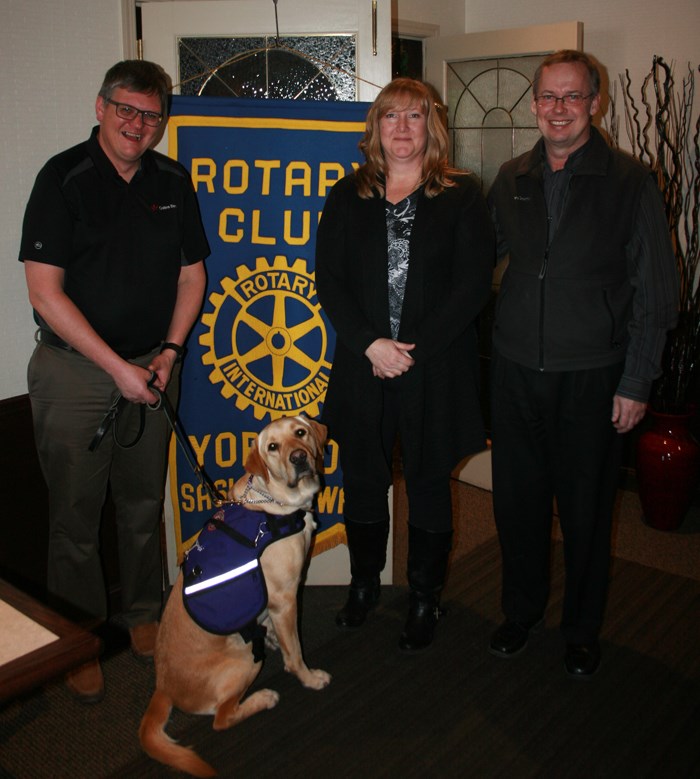A new service dog has arrived in Yorkton to help a young boy with autism.
And the family who welcomed ‘Vaughn’ in turn helped out National Service Dogs (NSD) with some funding.
Father Darcy Spilchen said he welcomed the opportunity to undertake a fundraising project.
“I was shooting for $10,000,” he said, adding “when all is said and done should be about $15,000.”
The funds were raised through a raffle, in which the Yorkton branch of Rotary was involved.
“Thank you so much for your involvement,” he told local Rotarians at a luncheon Monday. “The money raised is going to a very important cause (the NSD).”
Families help where they can, said organization Executive Director Danielle Forbes.
“Families are not required (to raise funds), but any help is welcome,” she told the Rotary. She said being able to help place dogs all across Canada, there are four in Saskatchewan, is the fruit of the labour of many people.
The NSD has been providing dogs like ‘Vaughn’ for years now, and many people are involved in each dog. The animals are raised for some 18-months with foster families, then begin more intensive training for five, or six months. The dogs which pass the training are assigned at about two years of age, and will serve until they are 10.
Background on the organization’s website noted “in 1996, NSD pioneered the program of breeding, training and placing certified service dogs with children with autism. Over the last 18 years, NSD has graduated over 350 Certified Service Dog Teams, helped many service dog organizations around the world start their own autism programs, and has started three new programs: Certified Service Dogs for PTSD, Canine Assisted Intervention and Companion Dog Services.”
The NSD began when “the mother of a three year old child with autism was desperately searching for a service dog that could help her son. That same year he was matched with a quiet, sensitive black lab named Shade. The incredible success of this founding team brought popular attention from the media and the Geneva Centre for Autism.
The vast majority of placed dogs help children with autism.
Forbes explained dogs placed through the Autism Service Dog Program, like Vaughn, wear a jacket which allows them to be tethered to the child. That is important as many children with autism tend to wander away easily.
The dog is trained to “brace” against a child who is trying to run away.
“And we get children to hold on to the (harness) handle,” she said, noting that creates an area of safety for the child.
“We want them to be a team.”
The dog becomes “an extra set of paws” in watching over the child, said Forbes.
“Another way a dog helps with kids is socially,” said Forbes. “The dog becomes an ice breaker … They can stay lodged in their own world. They have to be interactive.”
Often children with autism are non-verbal, and do not react well in times of stress such as meeting people.
“That makes other kids uncomfortable.” said Forbes.
But with the dog, children are more accepting.
“They are seen as more approachable,” she said.
Having the dog can also settle the child, giving them a friend they are familiar with in times of stress.
“It changes the dynamics,” said Forbes, adding over time the dog helps stabilize the world of the autistic child. “… He (the dog) becomes the ‘go-to person’ when he feels stressed, or anxious.”




